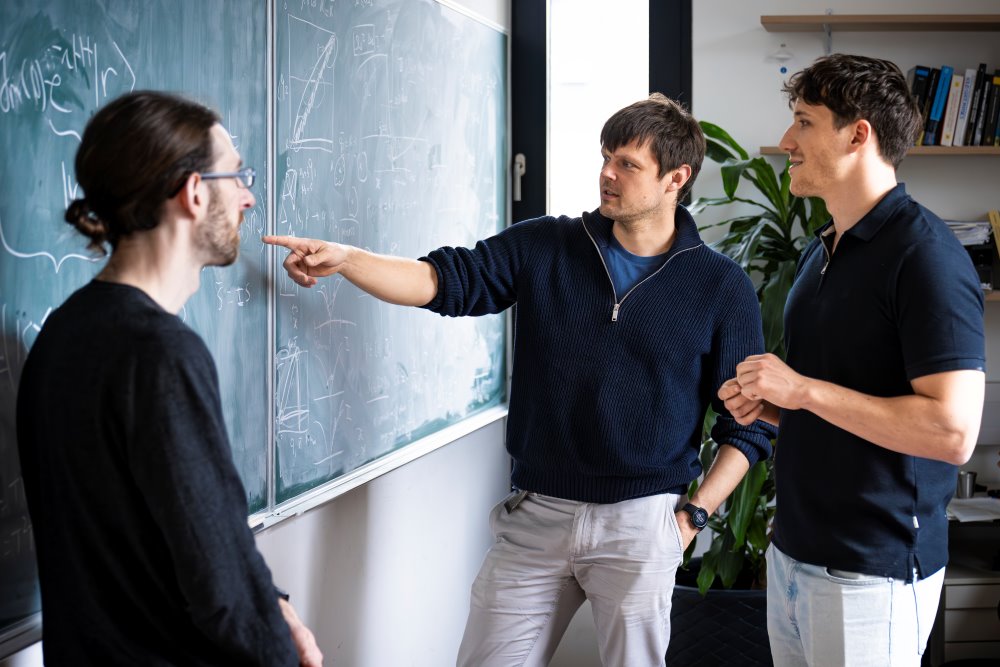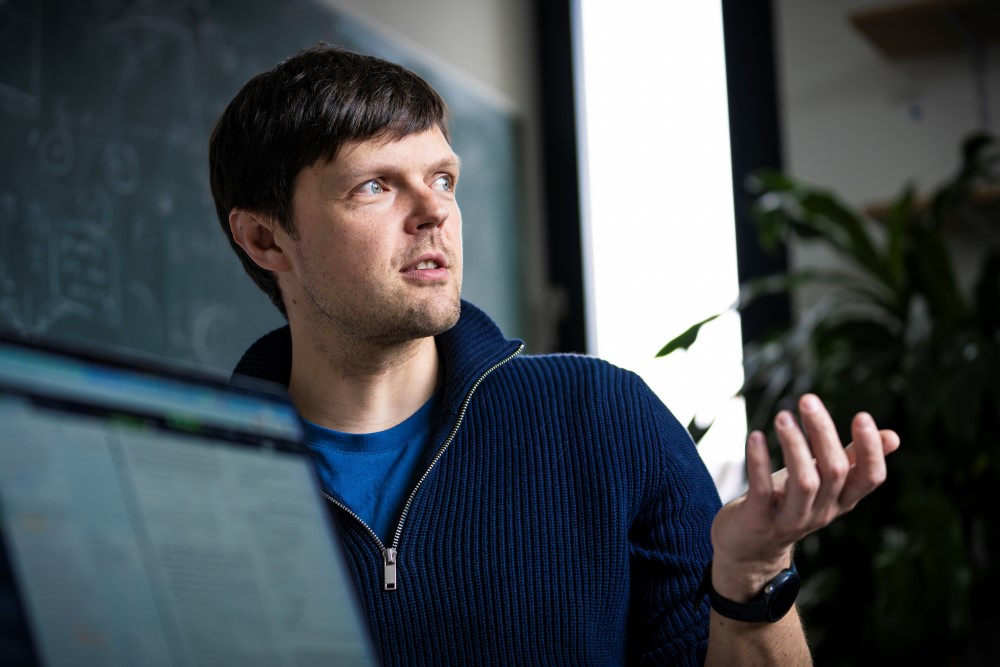April 23, 2025
A Sky Full of (Quantum) Scars
Bizarre quantum phenomenon more common than anticipated, ISTA physicists show
A surprising quantum phenomenon that goes against the universe’s drive for increased chaos might not be all too exotic after all. So far, quantum many-body scars were thought to exist only under specific experimental conditions. In a theoretical framework, ISTA physicists demonstrate new forms of quantum scars that were likely overlooked due to their increased complexity. The findings, now published in Physical Review Letters, could have future applications in quantum computing.

Order is transient. From the universe’s expansion since the Big Bang to our more or less tidy living spaces, everything around us is constantly getting messier by default. This is how equilibrium is reached spontaneously. For example, if we were to cut a diving cylinder open, the pressurized gas would quickly disperse, and the likelihood that it would spontaneously rearrange into its pressurized conformation inside the scuba tank is practically nil. This increased “chaos” has also been assumed to be true in quantum science, where the system can be in a quantum superposition of multiple states simultaneously.
However, in a study published in Nature in 2017, a quantum simulator using ultracold atoms produced a puzzling result: instead of reaching equilibrium with increased chaos, it returned to its ordered initial state repeatedly. To underscore its counterintuitive nature, a Quanta Magazine article compared this phenomenon to a repeatedly melting and refreezing ice cream popsicle. “This phenomenon, known as ‘quantum many-body scarring’ or QMBS, means that a set of initial quantum conditions persists over time instead of falling apart,” says the study’s lead author, Jean-Yves Desaules, a postdoc in Maksym Serbyn’s group at the Institute of Science and Technology Austria (ISTA). However, the new study he led with ISTA PhD student Aron Kerschbaumer and Serbyn shows that these quantum scars are much more common than initially thought. “We demonstrated multiple new QMBS trajectories that have likely been overlooked for many years because of their more complicated structures,” says Desaules. Instead of mixing beyond recovery, the newly described trajectories would allow the quantum information to remain local and retrievable.

‘Scarred’ atoms bear an imprint of the past
To form the quantum simulator described in the 2017 Nature study, 51 Rubidium atoms were cooled to a fraction of a degree above absolute zero and arranged in a row using lasers known as optical tweezers. A popular chemical element in quantum systems, Rubidium has a single outer valence electron that can be excited to very high energy states, thus allowing the atom to reach sizes that are downright giant on an atomic scale. By exciting cold Rubidium atoms, physicists can generate particles with peculiar properties, including an exaggerated response to electric and magnetic fields. Such particles, called Rydberg atoms, are particularly useful in quantum science.
Starting the system in a specific initial configuration, this early quantum simulator with 51 ‘qubits’—the fundamental building blocks of quantum systems—showed a strange phenomenon. Instead of reaching equilibrium by diverging into the vast possibilities of quantum states, the atoms returned periodically to their exact initial quantum configuration. As if ‘scarred,’ the atoms seemed to bear an imprint of the past that drew them back to their original configuration over and over again. Thus, this bizarre behavior came to be called “quantum many-body scarring,” whereby “many-body” refers to the multiple interacting particles in the quantum system.

Preventing information scrambling
One special property of the Rydberg atoms is that an excited atom will prevent other excitations in its vicinity—a property called the “Rydberg blockade.” This is due to the spacing between the optical tweezers, also known as optical lattices, which hold the qubits in place like beads on a string. So far, scarring in Rydberg simulators has been observed when the so-called “blockade radius” only extended to one neighboring atom on each side of the excited qubit. This is defined as a blockade radius of one. Until recently, QMBSs were thought to occur only under these precise conditions and not, for example, when the blockade radius included two or more atoms on each side of the excited qubit. “In our work, we show that a blockade radius of one is not the exceptional case under which quantum scarring can occur, but rather the norm,” says Desaules. The key to unlocking these additional scarred states, he explains, is a small amount of “local entanglement”—a phenomenon through which the quantum state of each particle in a group cannot be described independently of the state of the others. Serbyn adds, “With the new scarred states, instead of the quantum trajectory becoming immediately messy with information scrambling, the qubits can start at locally entangled states and explore new ‘retrievable’ states, meaning that the quantum information remains locally recoverable.”

Future applications in quantum computing?
Beyond theoretical quantum science, the special properties of Rydberg atoms are potentially interesting for quantum computing, an aspect that the ISTA physicists will investigate further. By showing that quantum scars are much more common than previously thought, they demonstrate that scarring is a powerful tool for handling quantum information. “Quantum many-body scars allow us to create complicated quantum states with little effort that could prove useful for quantum algorithms,” says Kerschbaumer. “Thus, in this respect, quantum scars could be an important resource for future quantum computation.” Kerschbaumer started this project during his first rotation as an ISTA graduate student in the Serbyn group before proceeding with the remaining required rotations in other groups. During this time, Desaules consolidated the theory. Once Kerschbaumer became affiliated with the Serbyn group, he resumed the numerical simulations with the help of former ISTA postdoc Marko Ljubotina. While the present study explores quantum scars in one dimension—a linear arrangement of Rydberg atoms, or qubits—the team aims to expand their analysis to atoms arranged in 2D grids. “Exploring higher dimensions will make the system much more complex and harder to treat analytically and numerically,” says Kerschbaumer. “But this is where we will be headed next.”

Publication:
Aron Kerschbaumer, Marko Ljubotina, Maksym Serbyn, and Jean-Yves Desaules. 2025. Quantum Many-Body Scars beyond the PXP model in Rydberg simulators. Physical Review Letters. DOI: 10.1103/PhysRevLett.134.160401
Funding information:
This project was supported by funding from the European Research Council (ERC) under the European Union’s Horizon 2020 research and innovation program (Grant Agreement No. 850899) and the European Union’s Horizon 2020 research and innovation program under the Marie Skłodowska-Curie Grant Agreement No. 101034413.



